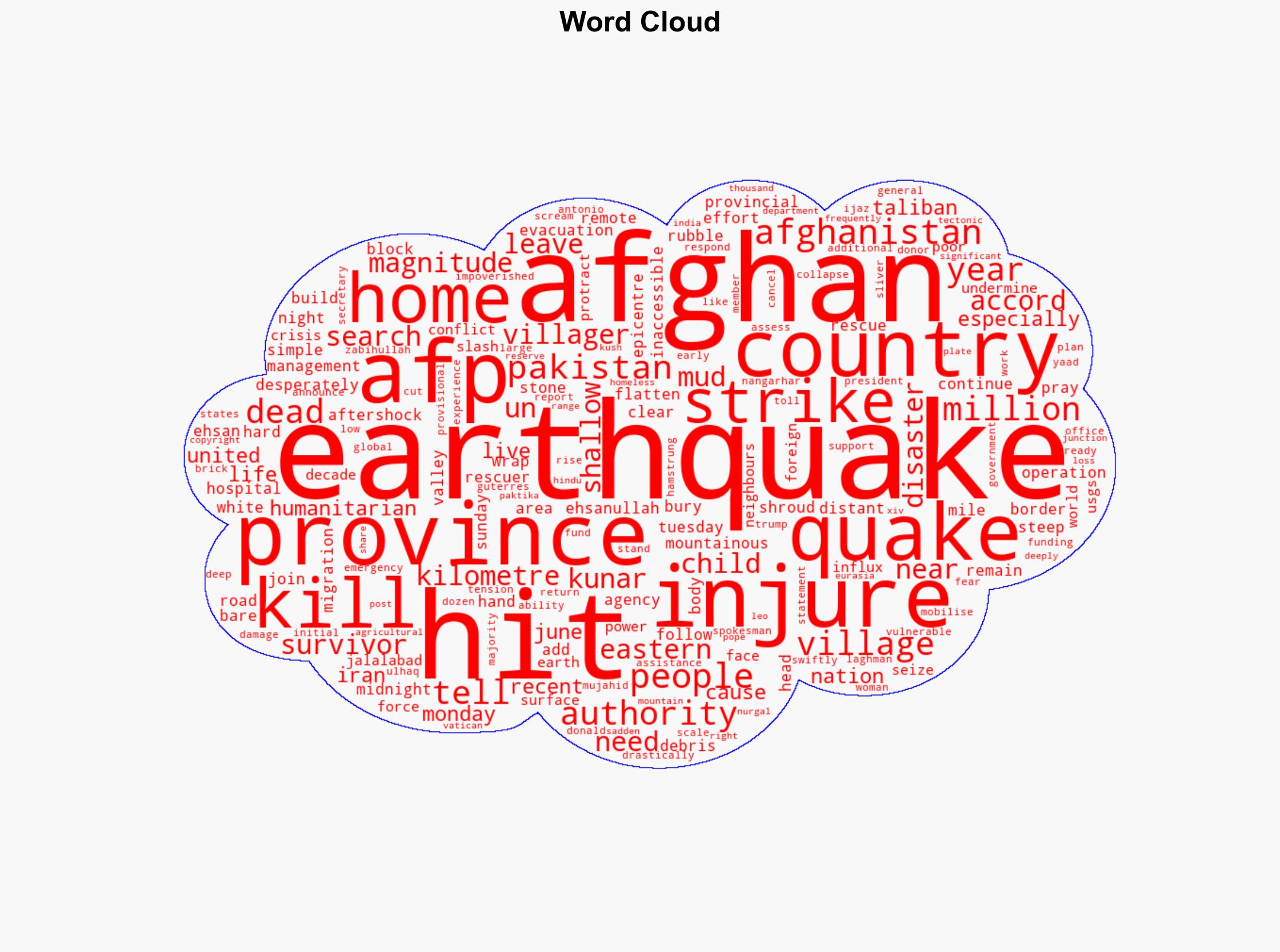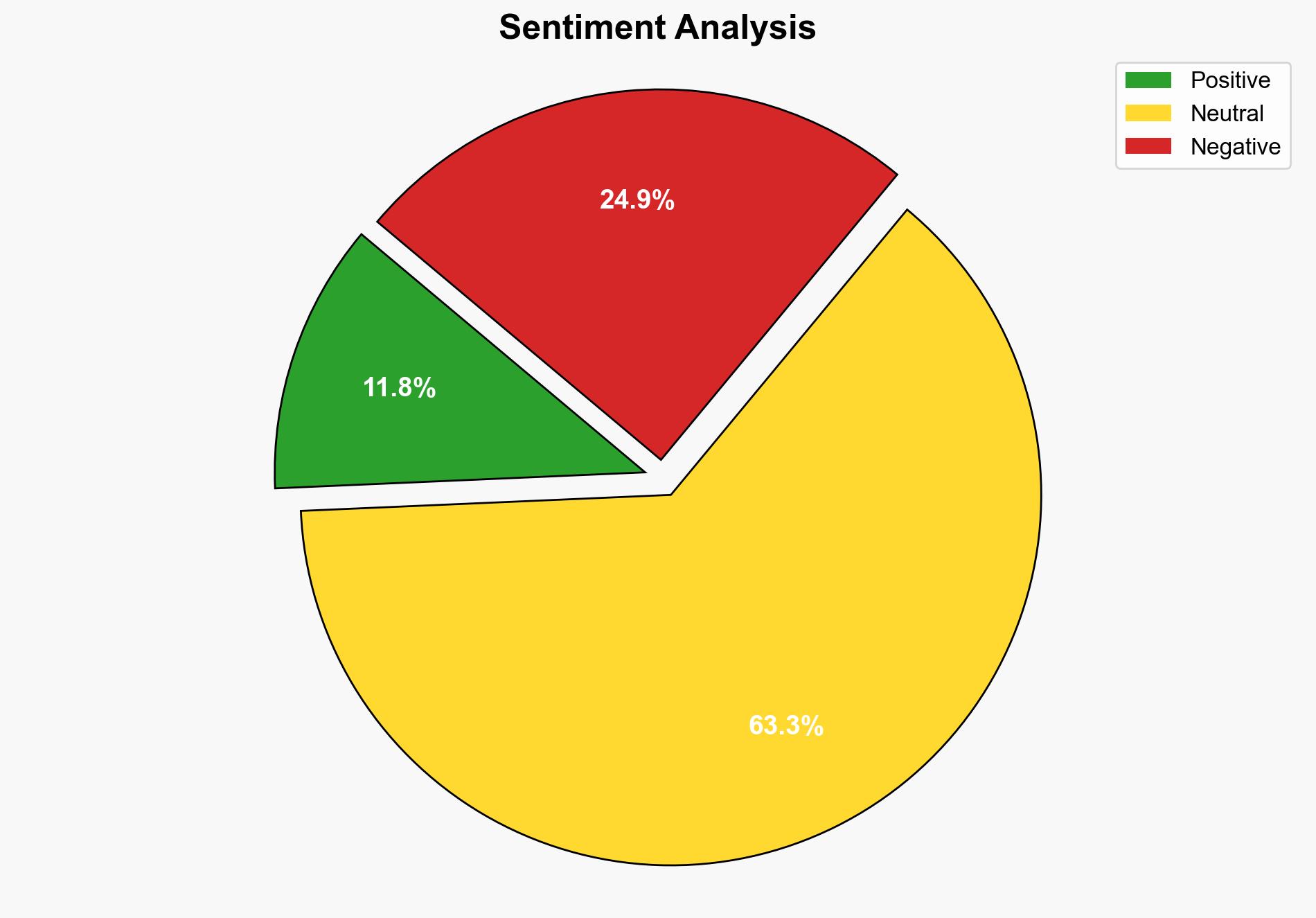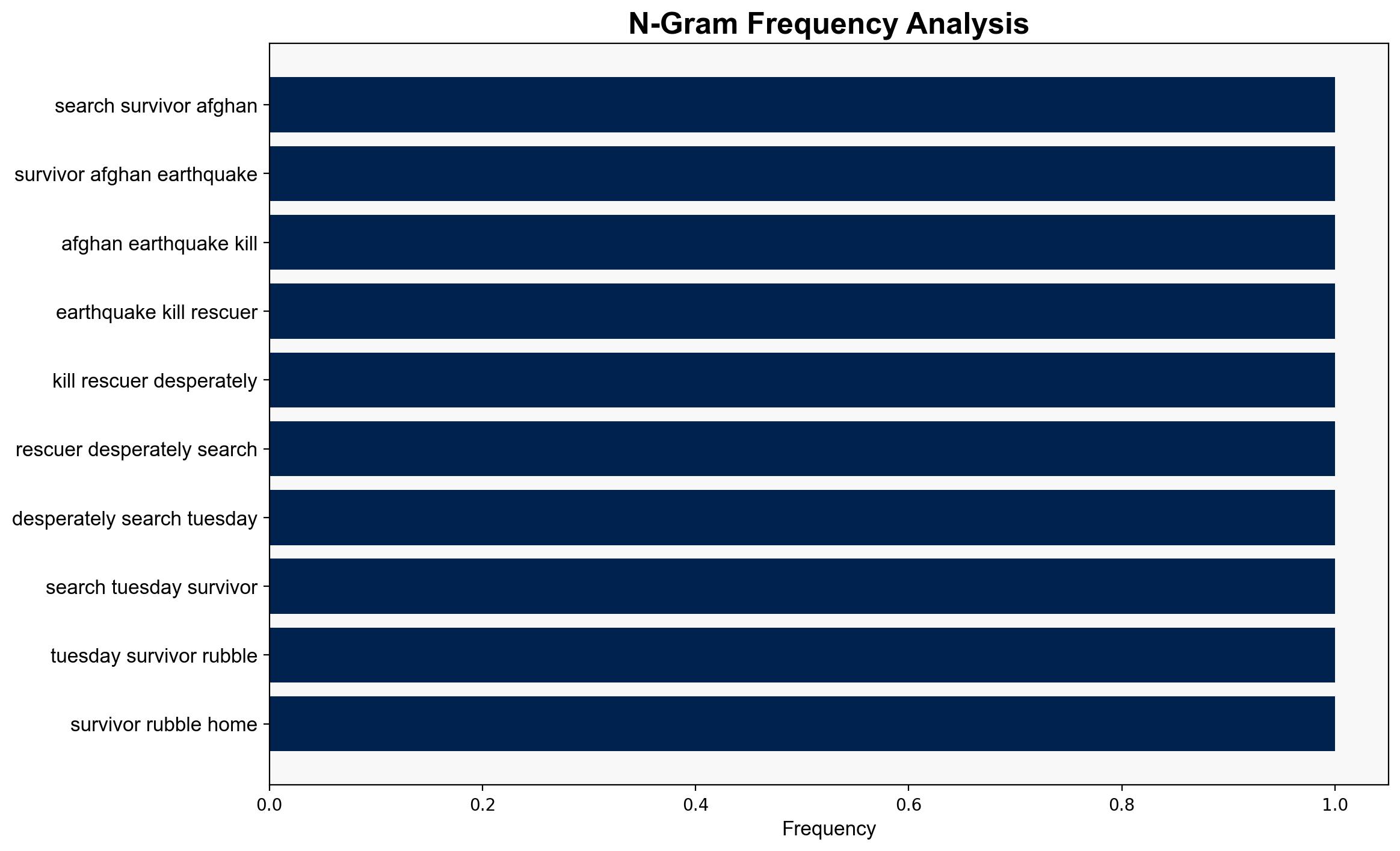Search For Survivors After Afghan Earthquake Kills 800 – International Business Times
Published on: 2025-09-02
Intelligence Report: Search For Survivors After Afghan Earthquake Kills 800 – International Business Times
1. BLUF (Bottom Line Up Front)
The most supported hypothesis is that the Afghan government’s limited capacity to respond to natural disasters is exacerbated by international isolation and reduced foreign aid, leading to a prolonged humanitarian crisis. Confidence level: Moderate. Recommended action: Encourage international collaboration to provide immediate humanitarian assistance and long-term disaster management support to Afghanistan.
2. Competing Hypotheses
1. **Hypothesis A**: The Afghan government’s response to the earthquake is hindered primarily by international isolation and reduced foreign aid, resulting in inadequate disaster management capabilities.
2. **Hypothesis B**: The primary challenge in the earthquake response is the logistical difficulty of accessing remote areas, compounded by the country’s ongoing internal conflicts and infrastructural weaknesses.
Using ACH 2.0, Hypothesis A is better supported due to the explicit mention of reduced foreign aid and international isolation impacting Afghanistan’s disaster response capabilities. Hypothesis B is plausible but less supported by the source text, which emphasizes international factors over logistical challenges.
3. Key Assumptions and Red Flags
– **Assumptions**: Hypothesis A assumes that international aid is crucial for Afghanistan’s disaster response. Hypothesis B assumes that logistical challenges are the primary barrier.
– **Red Flags**: The report lacks detailed information on the Afghan government’s internal disaster management strategies and specific logistical challenges faced.
– **Blind Spots**: Potential underestimation of local community resilience and informal networks in disaster response.
4. Implications and Strategic Risks
The ongoing humanitarian crisis could exacerbate regional instability, potentially leading to increased migration pressures on neighboring countries. The lack of effective disaster management might also fuel internal discontent and undermine the current government’s legitimacy. Additionally, reduced international engagement could allow non-state actors to exploit the situation.
5. Recommendations and Outlook
- **Immediate Action**: Mobilize international humanitarian aid to address immediate needs and prevent further loss of life.
- **Long-term Strategy**: Develop a collaborative framework with international organizations to enhance Afghanistan’s disaster management capabilities.
- **Scenario Projections**:
- **Best Case**: International aid is swiftly mobilized, stabilizing the situation and improving regional relations.
- **Worst Case**: Continued isolation leads to a deepening humanitarian crisis, increasing regional instability.
- **Most Likely**: Partial international response mitigates immediate impacts but leaves long-term vulnerabilities unaddressed.
6. Key Individuals and Entities
– Ehsanullah Ehsan (Kunar Provincial Disaster Management Authority)
– Zabihullah Mujahid (Government Spokesman)
– Antonio Guterres (UN Secretary-General)
7. Thematic Tags
national security threats, humanitarian crisis, regional stability, disaster management




